AUTHOR’S NOTE: This is part 2 of a 2-part series on the increasingly difficult phenomenon of open carry by law-abiding citizens. In Part I the laws and actions of lawful gun owners in general opened the discussion into a hotly debated arena of gun ownership today. Part II will look at the legal responsibilities of law enforcement, and provide suggestions to law enforcement’s response to lawful citizens who open carry.
The Law Enforcement Response
So where do the current laws leave today’s law enforcement officers? In a very difficult situation full of legal land mines, that’s where. The law enforcement officer’s job is already difficult, but understanding how to properly handle citizens lawfully carrying firearms is really a newer phenomenon in the numbers we are seeing today. It is also a situation that officers must master in order to maintain officer safety and not infringe on a civil right.
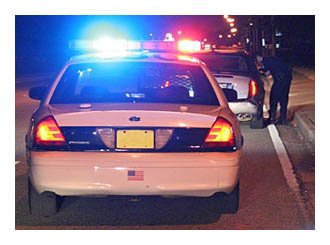
The Legal Responsibility of Law Enforcement Officers
At one time or another every law enforcement officer swore an oath to uphold the U.S. Constitution, and the Constitution of the State they work in. The iconic ‘to protect and serve” is heavily influenced by this oath, and provides the foundation that all officers should work from in deciding how to handle any situation. Sometimes the application of laws can be somewhat cloudy, but the beacon of correct decision-making always goes back to the Constitution.
The most legally dangerous decisions law enforcement is faced with making are those that require decisions in a fraction of time. Thankfully the U.S. Supreme Court has consistently sided with officers faced with dangerous situations that evolve very rapidly to determine if the officer’s actions remain within Constitutional guidelines. The landmark case of Graham v. Conner laid out the legal standard judging whether an officer’s actions were “objectively reasonable”, even if ultimately they were wrong in their initial observations or decisions. An even stronger admonition by the Supreme Court is that officers must be judged by what a reasonable officer would have done given the same set of circumstances. Officers cannot be judged by the micro-analyzed view of 20/20 hindsight that is often the measure used by the media and attorneys.
However, enforcement actions that are allowed more time for deliberation receive a much stricter review. If an officer takes an enforcement action after deliberation, and is wrong on the law, may commit a Constitutional violation. The legal consequences of that decision and any enforcement action can be devastating to the officer.
Having that in mind, the new laws about carrying firearms, whether concealed or in the open, require a diligent examination by the law enforcement officers charged with their execution and investigation. That is the law enforcement officer’s duty.
Patrol Response
Typically these investigations are started by a call about an “armed” person. There are very few calls that peak an officer’s interest more than an “armed” person call, so it is incredibly importance for officers to gather as much information about the situation as possible. Too often I’ve seen officers take face value what they receive from Dispatchers or their in-car computers and respond accordingly. It is paramount in these situations for officers to ask clarifying questions about how the person is “armed”.
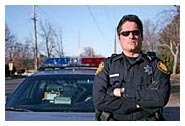
The obvious questions an officer will have are “what kind of firearm” and “what is the description of the suspect”. However, the prudent officer will go further and ask questions that directly impact the response based upon the legality of the action.
- Is the person brandishing the firearm?
- Has the “armed” person made any threats?
- Is there an active disturbance with the armed person?
- Have any shots been fired?
- Does the “armed” person appear intoxicated?
- Does the person show signs of being mentally ill?
- Are there other suspicious actions that could indicate criminal behavior?
The answers to these questions can clarify the incident for the officer and determine whether they are responding to a potentially felonious crime, or on a call where a person is exercising protected rights. If answers to those questions indicate more of the exercise of a legal right, then the response can be tapered to more adequately fit the call. With better information, responding with lights and siren may not be necessary, or even appropriate. If there are no reports indicating a more dangerous situation, a standard response is likely more appropriate. Think about it this way, if a true armed disturbance is actually occurring you can bet every cell phone in the area will be calling in.
When arriving officers should never pre-judge the situation based on anything they received from Dispatch. Maintaining officer safety should still be paramount, but rushing in with guns drawn, and yelling for everyone to “get down”, is a guaranteed way to make an awkward situation a disaster – for both the police and the citizens. Like other calls, try to locate the calling party, or management at a business, to gather first hand information about what is actually occurring.
If possible two or more officers should respond to ensure that if a situation does escalate, enough officers are present to handle any dangers that may be encountered. If long guns are brought onto the scene, they should be slung as quickly as possible if the situation does end up being a lawful open-carry or CCW situation. Remember, if the person is acting lawfully, law enforcement’s continued display of AR-15’s, shotguns, or drawn handguns will tap dance on the infringement of someone’s Constitutional rights.
If the person is simply out in public try a voluntary conversation, and quickly explain why you are talking to them. Many proponents will be prepared for these situations, and officers handling these situations well will go a long way in ensuring the trust of lawful citizens. Officers handling these incidents poorly will likely receive a valid complaint, civil suit, or perhaps a YouTube video that makes all of us cringe. Think about a political rally where derogatory remarks are made that offend someone else, but are still fully protected under the 1st Amendment. Rights are rights. If your investigation reveals that it is a protected activity move on as quickly as possible.
Carrying Firearms in Businesses
If your State laws allow open carry (or concealed), a business representative must voice a desire for the armed citizen to be removed. It is imperative for the responding officers to get that answer from management as soon as possible. If obtained, then law enforcement may provide the armed citizen a trespass warning. Too often the business representatives want law enforcement to “handle” the awkward situation, without their involvement which could chase off a potential customer. Don’t get caught up. Explaining the law will be a very important part of the outcome of this call.
Officers should be very careful when detaining or demanding identification from those exercising their rights. If this is a legal activity in your jurisdiction, a call for service does not automatically give authority for detention or identification. Even if a business wants them removed, a criminal trespass only occurs if they refuse to leave. Otherwise, the citizen is exercising a lawful activity. In a CCW situation, your laws may allow for verification of a carry permit, but often open carry laws do not require a permit.
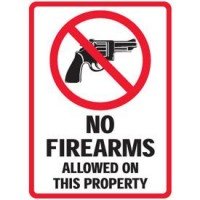
Many businesses are allowed to prohibit firearms possession on their property. This has been decided by the courts on the basis that it is private property and not public space. The requirement of the business is to post an approved sign at the entrance. However, check your laws, because many States advise that a person exercising their rights can only be asked to leave. An arrest or detention may only be allowed if the person refuses to leave or has previously been warned. Some jurisdictions may allow arrest if a proper sign is posted. The point – know YOUR laws!
Nothing in these recommendations should be considered as a disregard for the dangerous interaction that occurs when law enforcement encounters armed persons. Instead, the reader should take away discussion topics that can be decided upon at their local agency level. Though legal carry of firearms is more prevalent today throughout the country, there are still several situations that a person can violate the law with their firearm. Brandishing the firearm in an angry manner is almost a universal violation of the law, as is possession of a firearm while intoxicated, or the discharge of a firearm within many city limits – regardless of if that discharge was “accidental”. Those realizations must be considered as well when law enforcement responds.
Open or Concealed Carry on Stops
In this section I’ll tackle the most appropriate ways to handle contacts with law-abiding citizens found to be armed during investigations or minor enforcement actions like a traffic stop. The emphasis on Constitutional action will again play an important role in the successful interaction.
As a supporter of 2nd Amendment rights and protections, and as a law enforcement officer that prides himself in proactively seeking out criminal activity to act upon, I have seriously contemplated the various situations that I could come across involving both legal and illegal possession or display of firearms.
When I come across someone carrying a firearm on a stop I always ask for a second officer to respond, just in case. However, recognizing the legality of carrying firearms I then will seek to determine if the person possesses a concealed carry permit. In my State a person can have a concealed firearm in their vehicle without a permit, but to step out of the car with the firearm concealed requires a concealed carry permit. The reason I ask is a permit holder has had to undertake a criminal history background check by the Sheriff, as well as participate in an 8-hour safety course.
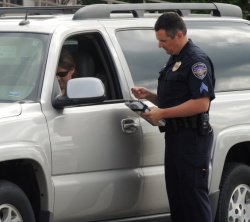
Concealed Carry Permit Holders
If the person possesses a permit I have a greater idea of what kind of person I’m dealing with. Not that a permit holder cannot commit a criminal act with the firearm, but statistics show that this is an extremely rare occurrence. In fact, the permit holders I have come across have most often gone out of their way to alert me to their being armed and their status as a permit holder. Handling these citizens with respect for their rights goes a long way in establishing a good relationship with the public, and is legally sound.
In those situations I will proceed in one of two ways. In many cases (especially when they have gone out of their way to notify me of the firearm’s presence) I will thank them, and simply ask them to keep their hands on the steering wheel whenever I approach the vehicle. I have never had a person refuse to do this, and it is minimally intrusive and reasonable to someone who is exercising their right.
If the person is not carrying their firearm on their person, I will ask for the firearm’s location. If it is already secured in a glovebox, center console, or underneath, etc. I will simply instruct them to leave the firearm in its location during the duration of the stop. The instruction to place their hands on the steering wheel during my approach is provided, and if the stop is at night I will also ask that they turn their dome light on so the interior of the vehicle is illuminated. All of these requests are reasonable, minimally intrusive, and I have never found resistance to their implementation by permit holders.
Non-Permit Holders
In my State, open carry in vehicles has been legal for decades, and at one time was the only way to legally carry a firearm in the passenger compartment of the vehicle. As such, it is not uncommon to approach vehicles and see a handgun laying on the dash in plain view. If the handgun is holstered I will likely just provide the cautionary requests I’ve mentioned before. Having the firearm on the dash is easy to view on approach, and the holster requires additional movement to withdrawal the handgun, so in my opinion is better than stashed away somewhere.
If the handgun is not holstered, and I want them to stay in the vehicle, I will usually ask that they grab the handgun by the action and move it to a glovebox, or underneath their seat. In that way, a movement towards the gun will be clearly visible later and I can respond accordingly. The temptation is for me to take the firearm and hold on to it while I go back to the cruiser to conduct records checks, but this is not legally permissible without consent or a specific reason to suspect an overt threat.
If for some reason I get that cop hunch that something isn’t quite right, I will ask them to step out of their vehicle where we can conduct the conversation at the rear of their vehicle, away from their firearm. I have done that on a few occasions, and though perhaps a little put out, the firearm owners I’ve dealt with have never put up much of an argument. This option can be used on any type of stop with a firearm carrier, but is usually best reserved for times where something has already alerted the officer to something suspicious.
Conducting Records Checks on Firearms
Here is a topic that is going to generate a lot of discussion, but it is one that is very important to the overall success of an officer in these encounters. Some of you have probably already asked, “why not just take the firearm for ‘officer safety?” Before laws allowed the concealed carry of firearms, the typical response of a law enforcement officer coming across a firearm on a stop was to temporarily secure the weapon and conduct records checks.
Now that most States allow concealed carry of firearms I want to caution officers from routinely conducting these actions. Remember, the 4th Amendment protects citizens from “unreasonable searches and seizures”. If the State Legislature has made the carrying of firearms legal, than what legal right does law enforcement have in temporarily seizing those firearms to conduct records checks, or for whatever reason? I’m not an attorney, but in my experienced opinion we do not have any legal justification to seize the firearm of a lawful citizen in these circumstances, even for “officer safety”. The courts are quick to rule against law enforcement when a stop is unnecessarily prolonged, so you can bet that they will not look favorably on an arbitrary “seizing” of a lawfully possessed firearm.
When taking action is justified

However, if during the course of our investigation, reasonable suspicion or probable cause arises that a firearm violation is occurring, or a threat exists of an assault or flight, than that changes everything. The critical component is the officer must be able to clearly articulate those specific circumstances, such as:
- The subject is intoxicated
- They have a domestic protection order, or conviction
- The subject is an illegal alien
- They come back with an IFS indicator showing they are barred from possession or at least in question
- They have been accused, or are a suspect of a recent crime – firearm related or otherwise
- The subject’s actions or statements clearly indicate a potential threat
- Other situations that can clearly be expressed indicating a violation of firearms laws.
In most of these situations State or Federal laws already make possession of a firearm in these circumstances unlawful. In the case of a reported firearm crime officers should most likely use high risk stop procedures for getting the occupants out of the vehicle and away from the firearm. Those situations are no-brainers. Violations during standard investigations requires a lot more finesse, but officers should move quickly to secure the firearm and person.
Nothing says that the officer cannot ask consent to hold the firearm, or consent to conduct checks, but again law enforcement should really be very cautious in these situations. A law-abiding citizen has no obligation to submit to this consent, and it will likely be just as offensive as if you asked a woman to hold her purse during a typical stop. As law enforcement officers we are sworn to uphold the law. If your State law makes carrying a firearm legal – then it is legal.
Final Thoughts
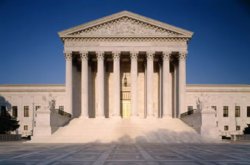
The 2nd Amendment allows law-abiding citizens to possess firearms, and recent legal trends have strongly supported their right to carry those firearms. There should be no argument that today’s law enforcement officer has an increasingly difficult job. Having a strong understanding of Constitutional law, State Statutes, local laws, and department policy is a must. This would fall into an area that I would consider an officer must have 100% knowledge, 100% of the time.
Officers can take time to look up laws on loud noise, or faulty vehicle equipment. Interacting with individuals known to be armed is NOT one of those times. With legal firearm carriers are bound to be filled with controversy, but an officer’s appreciation of the law and their oath should allow the officer to navigate these legally difficult waters with much greater ease.
What are the laws in your area? What experiences have you had in interacting with armed citizens? Post your responses so all our readers can benefit on this complex issue for American law enforcement.